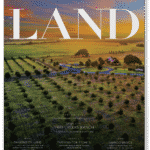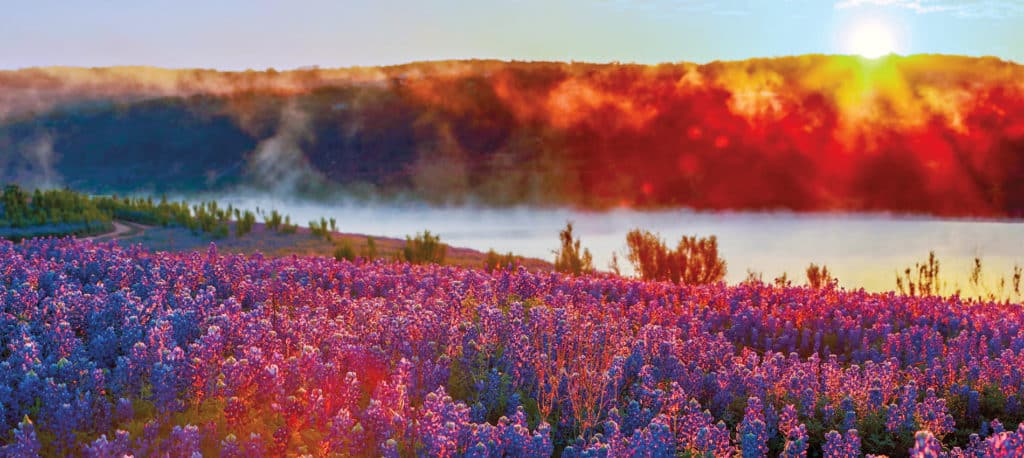
This article is featured in the Spring 2021 issue of Texas LAND magazine. Click here to find out more.
Long considered a smart investment, rural land became even more appealing in the turbulence of 2020.
As the old saying goes, ‘They’re not making any more of it,’ but this past year really highlighted the value of having a place to get away from it all,” said Brandon Bownds, owner-broker of Bownds Ranches in Utopia. “It’s an investment that brings peace of mind and enjoyment as well as tax benefits and a strong return on investment.”
Recently, the American Society of Farm Managers and Rural Appraisers released its annual Texas Rural Land Trends report. According to the report, 2019 rural land prices in Texas were up year-over-year by 6.94 percent despite a weaker oil and gas economy. Although the volume of 2019 land sales was less than that of 2018, the dollar volume increased by 12.09 percent to $1.4 billion.
While statistics aren’t available yet for 2020, anecdotally it was a record-breaking year.”
While statistics aren’t available yet for 2020, anecdotally it was a record-breaking year.
“2020 was as busy as any year I remember—and 2021 doesn’t show any signs of slowing down,” Bownds said.
Currently, inventory is tight. Buyers are anxiously waiting to purchase a suitable property when it becomes available. In several instances, Bownds has sold multi-million-dollar ranches before he’s even had a chance to have photos taken. A limited inventory means that buyers don’t have the luxury of long deliberations.
“In this market, if you see something you like, jump on it,” Bownds said. “It may not be there tomorrow.”
Many first-time land investors are flocking to the marketplace as part of the current land rush.
“Like any investment, purchasing land has its own nuances, so it’s important that buyers work with a trusted professional,” Bownds said. “Decades of hands-on experience, like I’ve earned, can help showcase opportunities and avoid pitfalls.”
The Big Picture Basics
Just as no two rural properties are alike, no two buyers are alike.
“Everybody wants something a little different,” Bownds said. “It’s helpful for most people to spend some time thinking through what they really want before embarking on a land search.”
Location is important in every real estate investment. With rural properties, it takes on an entirely different dimension.
“Texas is diverse—and beautiful,” Bownds said. “Decide where you want to be, whether it’s the limestone of the Hill Country, the brush lands of South Texas, the thickets of the Piney Woods, the mountains of West Texas or somewhere in between.”
In addition to identifying their desired region of interest, he suggests that buyers consider how much time they plan to spend at the ranch and how far they’re willing to regularly travel to get there.
“Some folks want to spend every weekend on the property, so they want to be within a two-hour drive of their full-time residence,” Bownds said. “Other folks just want to visit occasionally or they may even have access to a private plane, so covering a big distance is inconsequential.”
Generally, the closer rural land is to a metropolitan area the smaller the available parcels are—and the higher the price.
Land stewardship requires an ongoing investment of time and money. Of course, the return is productivity, satisfaction—and a solid investment.”
—Brandon Bownds Bownds Ranches
“Some people value convenience, while others value elbow room and complete solitude,” Bownds said. “Again, it’s a personal preference.”
Buyers also need to consider their budget and what they want for their money versus what they can get for their money. For instance, live water is sought after, but it’s expensive.
“Some people would rather own 100 acres with live water, while others will forgo the live water in exchange for more land,” Bownds said. “Only you know what trade-offs you are willing to make, and it’s helpful to consider those ahead of time.”
Size also matters. The larger the ranch, the more management and maintenance it will require.
“Buyers need to think about how much land they want to care for—and whether they will want to do the work themselves or hire part-time or full-time help,” Bownds said. “Land stewardship requires an ongoing investment of time and money. Of course, the return is productivity, satisfaction—and a solid investment.”
Developed Property vs. Raw Land
Ranches generally fall into two categories: developed properties or raw land. In the context of a ranch, developed means that all or most of the necessary infrastructure including utilities, roads, fences, dwellings, storage buildings, barns and a water distribution system already exists. Raw land, on the other hand, has few, if any improvements, and is in a natural state.
Whether a “dolled-up, turnkey” ranch or raw land is the best investment for a buyer, again depends on the buyers and how quickly they want to see a return on investment.
“With a dolled-up ranch, there’s not much buyers can do to add value, so they have to hang on to it for a longer period of time to build equity,” Bownds said. “With raw land, the buyers can make improvements—either in phases or all at once—and capture the increased value of those improvements, enjoying a return on the investment sooner.”
Another factor that comes into play is convenience. Some people prefer a “hassle-free, move-in ready” ranch, while others want a “fixer-upper” that they can sculpt to their tastes.
“It just depends on whether you want ready-made comfort or a satisfying challenge that results in a property that is custom-made to you,” Bownds said.
While raw land offers a potentially larger bang for the buck, it takes expertise to develop land to its full potential. The process generally involves installing well-placed roads and fences, putting in electricity and communications, drilling water wells, building or improving impoundments, constructing dwellings and outbuildings and strategically manipulating the vegetation either through land clearing, re-seeding or prescribed burning.
“In carpentry, there’s an old saying, ‘Measure twice, cut once,’” Bownds said. “In other words, once something is done, it can’t be easily undone, so make sure it’s the right thing from the beginning.”
Bownds offered a cautionary tale involving a landowner who built a stock tank himself and placed it in a location where it wouldn’t catch water. To supply the tank, the landowner attempted to divert a nearby creek. In the process, he cleared the old growth hardwoods and brush from the creek bottom, changing the land’s character.
“It was unintentional, but he did irrevocable damage to the land and its long-term value,” Bownds said.
To avoid pitfalls, Bownds suggested that inexperienced buyers interested in developing their own properties work closely with someone, be it their broker or a consultant, who knows what increases land’s value and its productivity.
“My entire life has been spent on rural land,” Bownds said. “I’ve worked it, I’ve developed it, I’ve bought it and I’ve sold it. I can step on a piece of property and almost immediately know what needs to be done and where it makes the most sense to invest time and money.”
In his experience, improvements that deliver return most consistently are: developing live water, installing a road system that provides access throughout the property, strategically clearing the land and reinvigorating grass and forbs, building fences and constructing an appealing electric-gated entrance.
And if the buyer’s ultimate goal is eventually selling the property, Bownds cautioned against going overboard on the improvements such as dwellings.
“Fight the temptation to build something that is too big or too personalized to your own specific taste,” Bownds said. “Overbuilding can add expense, but not value because at some point it limits the prospective pool of buyers.”
Regardless of whether a buyer wants a developed property or raw land, wildlife and its habitat matters.
“The vast majority of land in Texas is being purchased for recreation,” Bownds said. “Whether people are interested in hunting or simply watching, wildlife matters in the buying and selling equation.”
Two Important Details
When a buyer is touring a property, there are two things to consider that may be make-or-break details: access and neighbors.
“No one wants to own a property that they can’t get to, so access is important,” Bownds said. “If the land doesn’t front a public road, it’s vital to ensure that there is an expressed easement duly recorded in the title that provides legal access.”
While lenders require an expressed easement, cash buyers can circumvent that requirement. They do so at their own risk. Without an expressed easement, the buyer narrows the pool of potential buyers if they ever choose to sell.
Neighboring properties are a consideration as well. Being bordered by large contiguous ranches is vastly different than being bordered by a rural sub-division of ranchettes, which can create issues with overharvesting wildlife on low-fenced properties among other things. Commercial operations such as gravel or sand mines bring a different set of potential issues.
“My best advice is to observe your surroundings and take into consideration the potential impact of the neighboring properties on your desired lifestyle,” Bownds said. “Every scenario is different, but neighboring land uses are something to be aware of—another of the myriad of details that go into a buying decision. And it, like all the other details, highlights the value of working with a qualified, experienced professional to ensure that your investment delivers optimal returns and minimal headaches.”
Brandon Bownds, a fifth-generation rancher and third-generation real estate broker, owns and operates Bownds Ranches in Utopia. To tap into Bownds’ 25 years of experience, call him at (830) 966-6111 or email him at Info@BowndsRanches.com.

